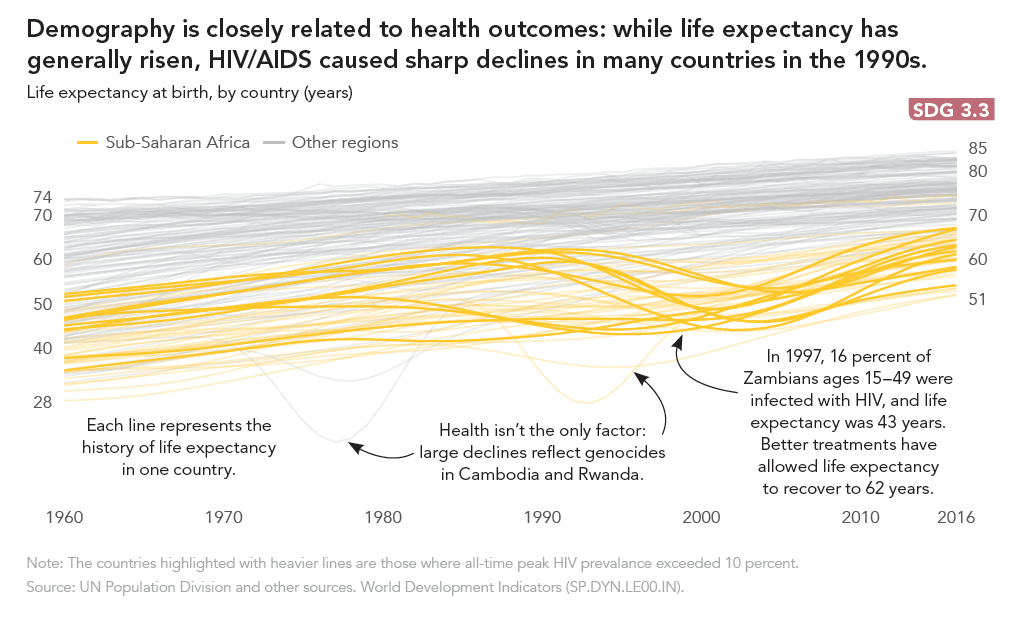Atlas of Sustainable Development Goals 2018
The 2018 version of the Atlas of Sustainable Development Goals has been published by the World Bank Group. As usual, it contains numerous interesting socio-economic statistics and visualizations, measuring the progress achieved towards 17 Sustainable Development Goals that are targeted by 2030. Besides its highly informative charts, the Atlas also sets high standards in terms of transparency: basically all data is publicly available, and even visualizations come with a link to the R source code hosted on github (e.g. follow this link to the source code of the first chart below).
From the extensive full collection of charts let me showcase five examples that I found particularly revealing. The first two charts address the still ridiculously high transaction costs that are associated with simple financial transactions in some developing countries. A simple transfer of money can still be associated with more than 10% (!) transaction costs. This might not be one of the most pressing issues that society faces, but it is something that I do particularly relate to as member of the FinTech industry. Seeing these kinds of inefficiencies in traditional financial institutions is one of the main motivations that led me to join the revolution of financial services. There is still so much that we can gain from further automation and usage of technology and data, basically in all business areas of the financial sector: money transfers and payments, investment management, lending and borrowing, retail banking and many more.
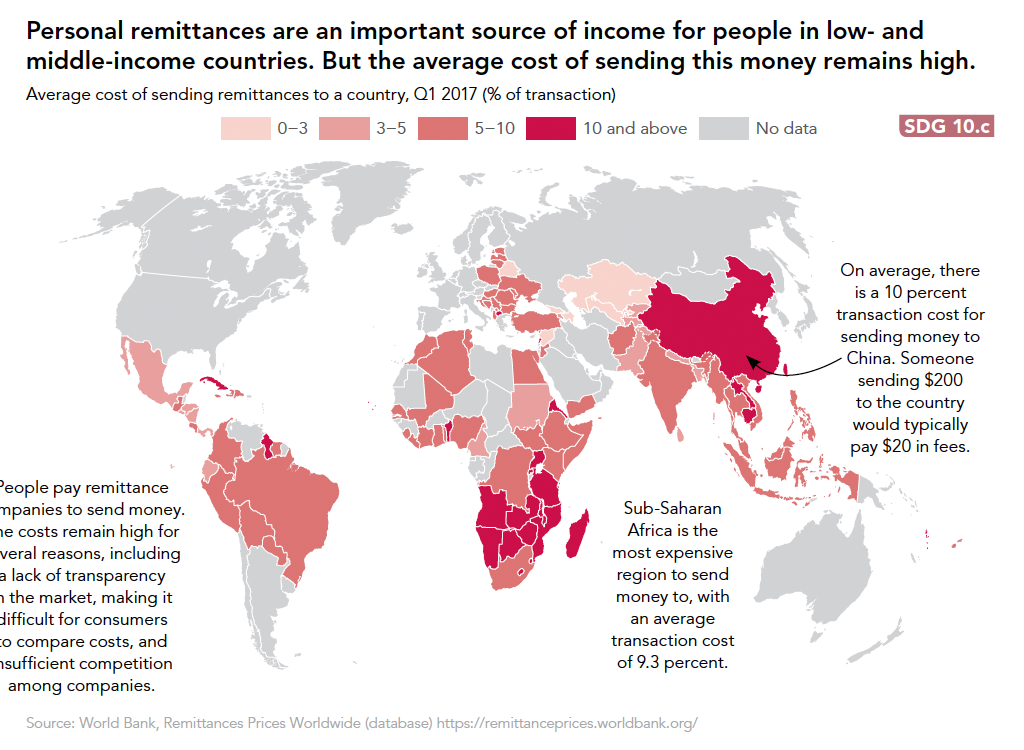
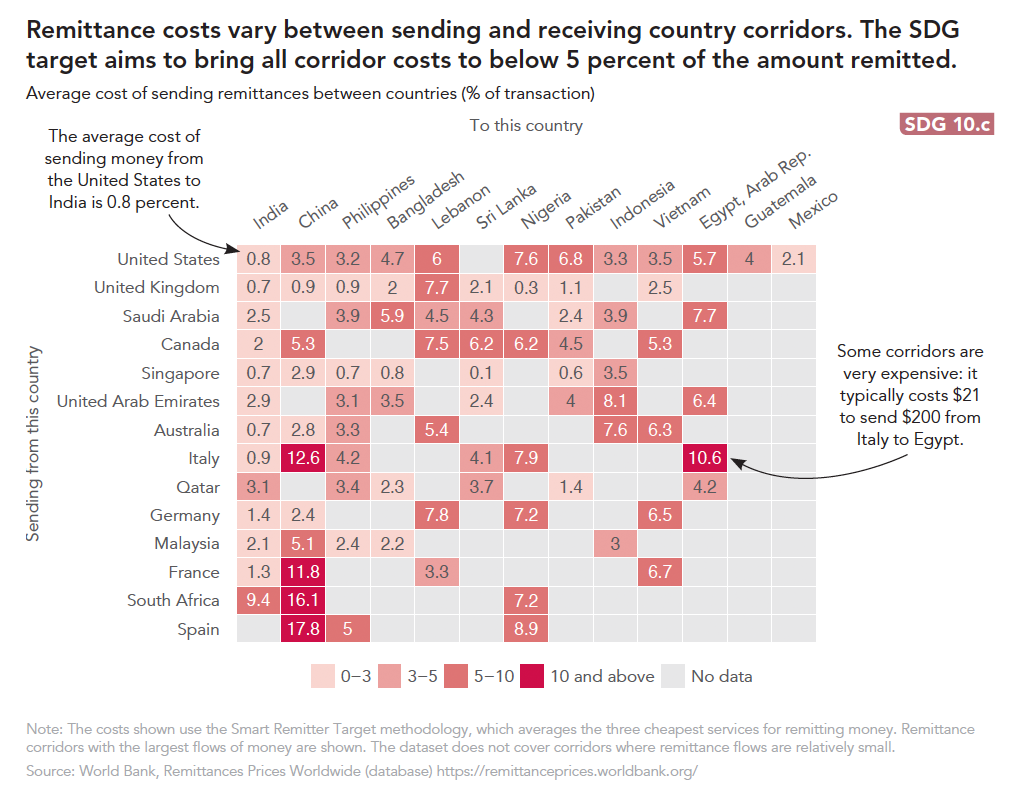
A second topic that I found disturbing is the fact that Internet usage is still at only 12% of people in low income countries. Access to Internet is one of the basic requirements for further advances in almost every field.
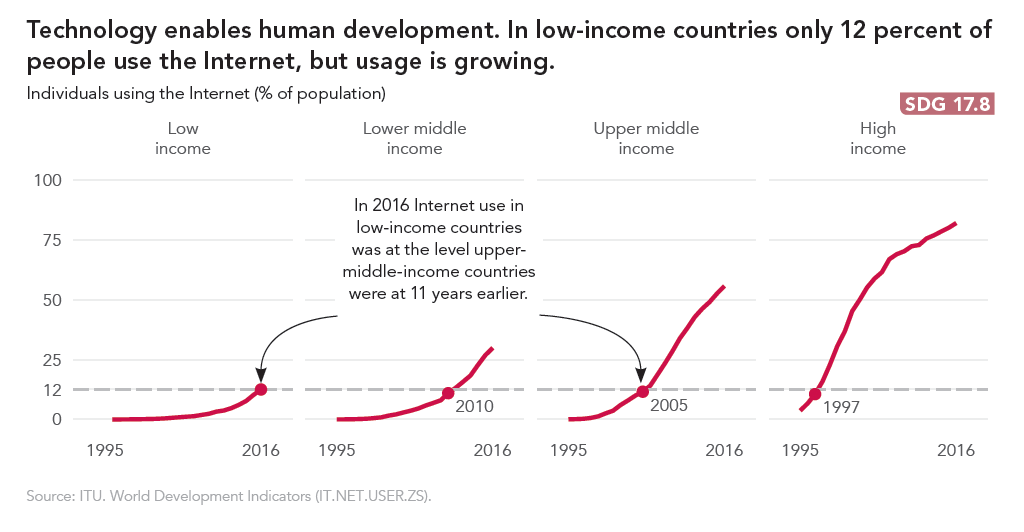
Besides the more technology driven topics from above the Atlas of Sustainable Development of course also gives a merciless resume of all of the most pressing problems of our time. For example, even though we get to hear about armed conflicts regularly in the news, it is always stunning to realize how many conflicts actually exist in the world:
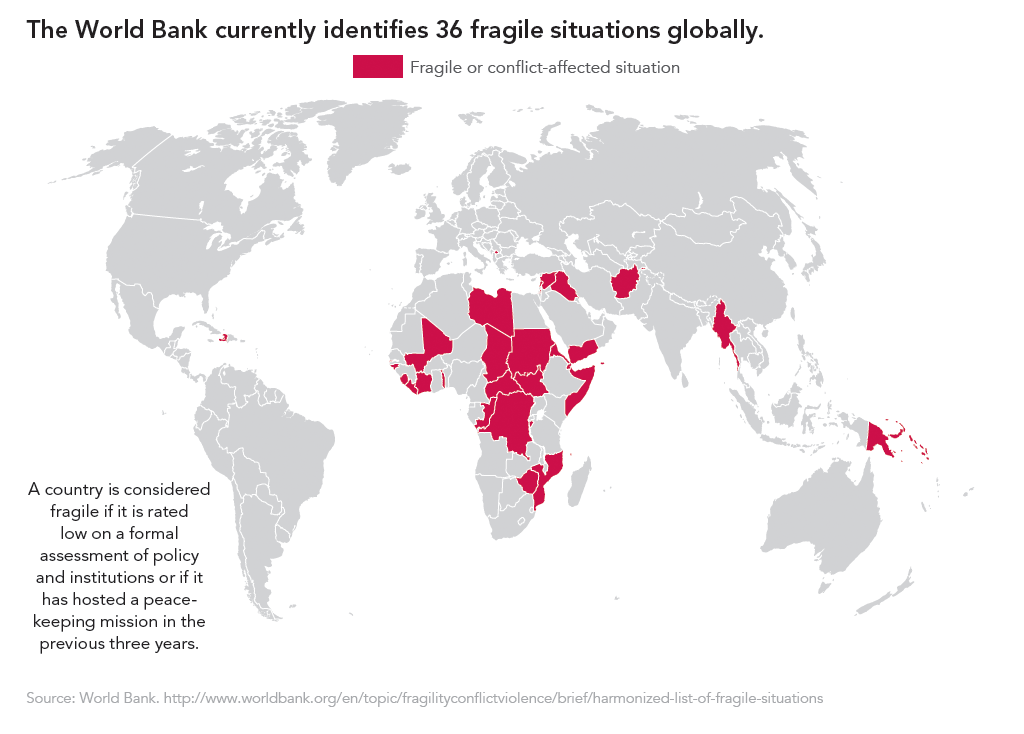
However, even with such disappointing charts we should not forget the progress that has been made. One particularly impressive example for this is the rise in life expectancy in almost all parts of the world (Africa sadly seems to lack behind).
